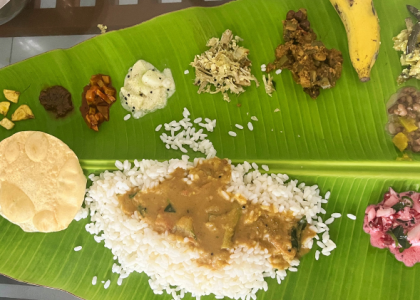For many South Asian families, eggs are a breakfast staple. From the protein-packed egg bhurji (scrambled eggs with spices) in India to the hearty anda paratha in Pakistan, eggs feature prominently in our cuisines. Yet, many South Asians worry about eating eggs regularly because of concerns about heart health – a valid concern given that people of South Asian descent have up to four times higher risk of heart disease compared to other populations.
So what does science really tell us about eggs and heart health? Let’s crack open this debate with some solid research.
What the Research Shows
A comprehensive 2013 meta-analysis published in the British Medical Journal (BMJ) by Rong and colleagues examined the relationship between egg consumption and heart disease risk. This large-scale review analyzed data from eight studies, covering over 3 million person-years of follow-up and including nearly 6,000 cases of coronary heart disease and over 7,500 stroke cases (Rong et al., 2013).
Here’s what they discovered:
No Link Between Moderate Egg Consumption and Heart Disease
Consuming up to one egg per day is not associated with increased risk of coronary heart disease or stroke in the general population. This finding directly challenges the long-held belief that eggs are harmful to heart health.
The researchers found that the relative risk of coronary heart disease for people who ate one egg daily (compared to those who rarely ate eggs) was 0.99 – essentially showing no difference in risk (Rong et al., 2013). For stroke, the relative risk was even slightly lower at 0.91, suggesting a potential protective effect, though this wasn’t statistically significant.
Special Considerations for People with Diabetes
The meta-analysis did find an important exception: people with diabetes showed a 54% higher risk of coronary heart disease with increased egg consumption (Rong et al., 2013). This is particularly relevant for South Asians, who have a higher genetic predisposition to diabetes than other populations.
Potential Protection Against Hemorrhagic Stroke
Interestingly, the study found that people with higher egg consumption had a 25% lower risk of hemorrhagic stroke (Rong et al., 2013). This is the type of stroke caused by bleeding in the brain, as opposed to ischemic stroke, which is caused by blood clots.
Understanding Cholesterol: Why Eggs Got a Bad Reputation
The concern about eggs has always centered on their cholesterol content. A single large egg contains about 210 mg of cholesterol – almost 70% of what was once the recommended daily limit. But newer research has changed our understanding of dietary cholesterol.
Did You Know?
- One egg contains about 210 mg of cholesterol – all in the yolk
- Eggs are excellent sources of protein, with about 6 grams per egg
- Eggs contain lutein and zeaxanthin, antioxidants that benefit eye health
- Eggs are one of the few natural sources of vitamin D, important for bone health
The Cholesterol Connection: Not What We Thought
The relationship between dietary cholesterol (what you eat) and blood cholesterol (what’s measured in your bloodstream) is more complex than previously understood. Not all the cholesterol you eat automatically becomes cholesterol in your blood.
Your liver actually produces most of your body’s cholesterol – about 80%. When you consume more cholesterol from foods like eggs, your liver often compensates by producing less, limiting the impact on blood cholesterol levels. This is why many people can eat eggs without seeing significant increases in their blood cholesterol.
Think of it this way: if your blood vessels are like plumbing pipes, LDL cholesterol (the “bad” kind) is like sticky debris that can build up and cause blockages. But eating eggs doesn’t necessarily add more debris to your pipes; many other factors like genetics, overall diet quality, and lifestyle play much more significant roles.
Why South Asians Need to Be Extra Careful
While the general population may safely consume eggs regularly, South Asians have unique risk factors that require special consideration:
- Higher prevalence of diabetes: With diabetes rates among South Asians being significantly higher than in other populations, the finding that diabetic individuals may have increased heart disease risk with high egg consumption is particularly relevant.
- Different fat distribution: South Asians often have higher levels of visceral fat (fat around organs) even at lower body weights, which increases heart disease risk.
- Genetic factors: Some genetic variations common in South Asian populations affect how the body processes fats and cholesterol.
Understanding Different Types of Strokes
The meta-analysis found that eggs might help reduce the risk of hemorrhagic stroke. To understand why this matters:
- Ischemic stroke occurs when blood flow to part of the brain is blocked by a clot. This is the most common type of stroke.
- Hemorrhagic stroke happens when a blood vessel in the brain ruptures, causing bleeding into or around the brain. While less common, this type has higher mortality rates.
The potential protective effect of eggs against hemorrhagic stroke may be due to their protein content or other nutrients that support blood vessel integrity.
Practical Advice for South Asian Heart Health
Based on this research, here are some guidelines for including eggs in a heart-healthy diet:
For Most South Asians:
- Up to one egg per day is generally safe for heart health
- Focus on cooking method – boiled or poached eggs are healthier than fried eggs with butter or ghee
- Balance matters – what you eat with your eggs is important (whole grain roti instead of white bread, for example)
For South Asians with Diabetes:
- Limit egg consumption to 3-4 per week
- Monitor blood lipids with your doctor
- Consider egg whites which have protein without the cholesterol in yolks
For Everyone:
- Focus on overall eating pattern rather than single foods
- The traditional South Asian diet with plenty of vegetables, legumes, and whole grains is heart-healthy
- Physical activity remains crucial for heart health regardless of diet
Limitations of the Research
The BMJ meta-analysis, while comprehensive, had some limitations worth noting:
- Self-reported food intake may not always be accurate
- Cooking methods weren’t analyzed but could affect health outcomes
- Other dietary factors couldn’t be completely controlled for
- Genetic variations specific to South Asians weren’t studied
Conclusion
Science supports that moderate egg consumption (up to one egg daily) does not increase heart disease risk for most people. However, South Asians—especially those with diabetes or insulin resistance—should take a more cautious approach.
Remember that heart disease risk is determined by many factors beyond any single food. Your overall dietary pattern, physical activity, stress management, and genetics all play important roles.
If you have concerns about your heart health, speak with a healthcare provider who understands South Asian risk factors. They can help tailor dietary recommendations to your specific health profile.
This article is provided for educational purposes only and is not intended as medical advice. Always consult your healthcare provider for personalized recommendations.
References:
- Rong Y, Chen L, Zhu T, et al. Egg consumption and risk of coronary heart disease and stroke: dose-response meta-analysis of prospective cohort studies. BMJ. 2013;346:e8539.
- Hu FB, Stampfer MJ, Rimm EB, et al. A prospective study of egg consumption and risk of cardiovascular disease in men and women. JAMA. 1999;281:1387-94.
- Nakamura Y, Okamura T, Tamaki S, et al. Egg consumption, serum cholesterol, and cause-specific and all-cause mortality: the National Integrated Project for Prospective Observation of Non-communicable Disease and Its Trends in the Aged, 1980 (NIPPON DATA80). Am J Clin Nutr. 2004;80:58-63.
- Sauvaget C, Nagano J, Allen N, et al. Intake of animal products and stroke mortality in the Hiroshima/Nagasaki Life Span Study. Int J Epidemiol. 2003;32:536-43.
- Houston DK, Ding J, Lee JS, et al. Dietary fat and cholesterol and risk of cardiovascular




